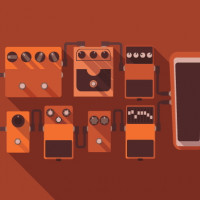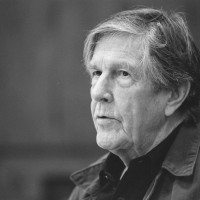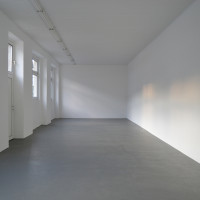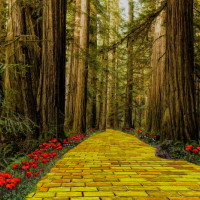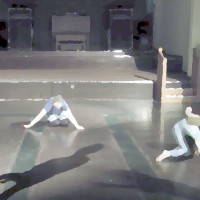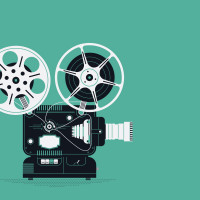Silent Agencies
Editorial article
by Morten Søndergaard & Laura Beloff
1. Intro
In today’s world, sound occupies an ever-increasing area of cultural and artistic production; however, beyond popular music, other sonic modalities are still on the fringe of institutional and cultural political awareness. This special issue aims to investigate those silent agencies that resonate in the contemporary art world and which are already structuring the modalities of sound in art and curating. Silent agencies refers specifically to the effects of crisis, and the artistic modalities operating with those effects. Moreover, it refers to a philosophical inquiry into the epistemological situation of crisis, and the ‘speculative’ situation of ‘a world without humans’. Bruno Latour writes about the embarrassing silence from researchers on the topic of crisis, and the need to imagine and express different paths than the existing ones (Latour 2017, p. 67).
In this vein, we want to investigate: How may curatorial and artistic structures of current behaviour be operationalized into real transformations of institutional and cultural political behavior? With this in mind we frame the selection of articles for this special issue. These articles address the situation and challenge silent agencies from different perspectives. With these perspectives we argue that it is possible to detect a wider set of problems facing curatorial work in the field of sound practices, ranging from the environmental and institutional impact of technological mediation, to reflecting on ways in which embodied and situated knowledge may emerge from artistic work beyond the conventional enframings of mainstream digital aesthetics and cultural industry.
The framing of this article is additionally toned with the exceptional situation of the pandemic that put the world on hold in the spring of 2020, and which has affected our everyday lives and will continue to shift our perspectives of the world in years to come.
We are currently living through an era that is impacted by the spread of the Covid-19 virus, which has forced people into isolation and made the planet slow down. The recent weeks spent in quarantine have affected the local environment to become noticeably quieter; there is less traffic, less planes, and less background noise in general. At the same time, environmentalists and biologists have made us aware of the ways in which strongly human-produced sounds impact e.g. birds in urban areas, and how the Covid-19 situation has resulted in an unusual period of heightened activities within urban non-human ecologies during these past months. It is important to realize that this is a global-scale situation, which is happening more or less at the same time in different parts of the world. We share this moment and situation with the rest of the planet, though different societies cope differently within it.
...that which would possibly be nothing but a passing crisis is being transformed in a profound alteration of our relation to the world. (Latour 2017, p. 9)
With this special issue, we are proposing that sound is the medium of altered relations – not only to the world at large, but to the ways we may think about those relations beyond raw and aggressive mediation and digital enframings. Sound, it seems, is particularly good at mediating the interwoven quality of surroundings, oscillating between patterns of nonhuman and human ontologies as part of ‘real’ agencies. During the Covid-19 lockdown, because we were able to hear each other and other things that were otherwise blurred or hidden behind the noises of a modern culture, we were made acutely aware of each other as part of a human Umwelt. However, we were also able to imagine a ‘world without us’, a completely non-human silent agency.
To repeat Latour’s point from the quote above: A crisis alters our relation to the world, which is to say that it brings about an acute awareness of the need for new artistic and curatorial practices. These should address matters of concern in the relation between humans and our Umwelt, and aim at pointing towards issues that need attention since they impact the whole planet beyond local urgencies. It calls for a focus on silent agencies as a mode of transformation of the way we think of ecology and environment as part of new artistic and curatorial practices.
2. Ecologies of crisis
On the whole, the natural environment has increasingly been the focus of contemporary artists during the last decade. For example, there has been a visible boost in artistic practices that deal with the natural environment, biology, biotechnology, and the art & science area in general. One can observe the same in the area of sound art: contemporary artists are targeting e.g. global environmental concerns with sound-based works.
An example of such a sound work is Kalle Laar’s sound art project Calling the Glacier. 2017 marked the 10-year-milestone for the work that was eradicated in 2007 for observing the melting of a glacier in the Austrian Alps. Laar’s project offers the possibility to call a telephone number which connects the caller directly to sounds of nature. “You hear flowing water of varying intensity, sporadic cracking and other sounds, which a ‘living glacier’ utters with the change of seasons” (Laar 2017). This work deals with a large-scale phenomena of climate change, bringing to our attention the otherwise silent agency of melting, shrinking, and disappearing of the planet’s glaciers caused by the warming climate.
Already in 1962, environmental scientist Rachel Carson published the much-debated environmental science book titled Silent Spring. The book documented the impact of the unregulated use of pesticides, such as DDT, to our environment. Carson writes: “There was a strange stillness. The birds, for example – where had they gone? Many people spoke of them, puzzled and disturbed. [...] On the mornings that had once throbbed with the dawn chorus of robins, catbirds, doves, jays, wrens, and scores of other bird voices there was now no sound; only silence lay over the fields and woods and marsh” (Carson 1962).
Very fitting to the emergent silence described by Carson in the 1960s, the sound artist AGF aka Antye Greie composed the multi-channel piece INDRI indri which represents a walk through a sonic forest that is based on field recordings of extinct animals from the Macaulay Library.[1] With a strong, factual statement that has a somewhat nostalgic tone, this piece points to the state of humanity by representing and imagining nature that once was – but no longer exists.
Richard Allen cites Greie in the review in the following way: “Listening is a political activity and is the groundwork for justice.” Allen continues: “Even if one skips the reading, one enters a sonic world in which decisions are essential: what species to save, how to act, the (supposed) difference between humanity and the rest of the animal kingdom, the uses and abuses of technology, even the allure of religion” (Allen 2019).
The increasing silence in our environment is also a topic of the work The Extinction Gong by Crystelle Vu and Julian Oliver. The work is effective in its simplicity: it is constructed from a traditional chinese gong that is automated mechanically to produce a beat. According to the artists, the beat frequency is based on the biologist E.O. Wilson’s estimation about the species extinction of 27,000 losses on a yearly basis – one per every 19 minutes.[2]
These above-described artworks are created in a specific context, situation, and time. They address the whole planet as a united and connected large-scale system and reflect on disappearance and loss through silence. They are contextualizing silent agencies.
In his contribution to this special issue, Joe Cantrell invites us to take a hard look at the silent agencies of obsoleted technologies in technology-based practices. He argues for the necessity of an ethical examination “in relation to the overall waste and exploitation that its connection to technological commodification entails”, proposing the operationalization of three modes of understanding sound technology as a guide for future environmental awareness in creative technological practices.
Jamie Allen, in his article, proposes ways of looking beyond the ‘media reveal’, which he sees as a ‘gesture’ in critical art and media making, aimed at exposing or deposing power structures. However, those power structures often remain, so in this sense the ‘media reveal’ remains a mere gesture. As he argues, given the “current environmental and humanitarian crises, we should consider how human activity through media helps to re-imagine and re-engineer always changing planetary systems”. We need new practices of knowledge which may address that which is not revealed by the media, but which rather counteract the structures that gave media the position to reveal in the first place.
3. Contextualizing Silent Agencies
As is well known, sound studies scholar Jonathan Sterne has proposed a broad characterization of sound studies as a field that “takes sound as its analytical point of departure or arrival”. He argues that sound studies is an “intellectual reaction to the changes in culture and technology” that focuses on sonic phenomena aiming to re-describe “what sound does in the human world, and what humans do in the sonic world” (Sterne 2012, pp. 2-3).
In this special issue, we take the premise of the study of sound a step further, so to speak; beyond the reaction to change, or to use Jamie Allen’s term: beyond the media reveal. Silent agencies is the umbrella term for a renewed focus on the specific situations of unmediated relations and otherwise muted formations. This, we propose, is a shared matter of concern to which new artistic and curatorial practices need to attend.
Such new practices are proposed in the articles by Solomiya Moroz and Liora Belford.
In ‘Confronting Embodied Knowledge: from Observing to Listening and Reacting’, Solomiya Moroz proposes a methodology for working with embodied sound and movement as an approach to creating open score pieces. These reflections are anchored in Deleuze’s proposal on affect, percept, and concept. Moroz proposes that it is those “packets of sensations” that drive our embodied interactions without any moment for reflection which listening and perceiving normally provides.
In ‘The Composer as Curator’ Liora Belford demonstrates how John Cage transformed exhibition-making by deconstructing the experience of the Gallery. Hereby a new field of research is founded, as Belford argues, where the composer curates the exhibition space based on composition principles.
There is a legacy to such silent agencies crossing the boundaries of artistic and curatorial modes, of course, which notably centers on the “silent piece” 4’33’’ (1952) by John Cage, or Robert Rauschenberg’s White Paintings (1951). Around the same time, Yves Klein and Guy Debord also created works related to silence, emptiness, and void. The legacy of this ‘aesthetics of absence’ is detectable in works by Yoko Ono, Nam June Paik, Else Marie Pade, Bruce Nauman, Carsten Nicolai, and Jacob Kierkegaard, among others (Daniels 2016, pp. 1-2).
Moving beyond the ‘aesthetics’ of absence, the question we raise in the special issue is: How would a silent agency operate on a global scale and as a response to crisis? One example of this would be G-Player by Jens Brand, which “enables us to play the world like record players… interpreting the contours of the Earth’s crust, and translating altitude into sounds… Seas engender silence. Mountains produce more dynamic acoustic structures than plains” (Brand 2007).
G-player enables listeners to perceive digital data as a tactile and analogical reality. As Brand explains, “the project is equally a functioning and contradictory metaphor that reflects upon the fascination of technologies, the philosophy of the market place and everyday human megalomania. In this context, it is therefore important that all of the presented procedures are not fictional models, but real and fully functional soft and hardware products” (Brand 2007).
In ‘The Institutional Situation of So-called Sound Art’ Rasmus Holmboe proposes a post-medium approach that evaluates and presents sound art in a broader cultural and contextual field. This is based on the argument that sound art studies largely “have neglected the historical, social and cultural contexts and especially the situatedness of its listeners, artworks and exhibitions in favour of a one-to-one, unmediated relation between artwork and listener that is seldom contextualised”.
The very issue of expressing transformations and going beyond the systemic remediation of cultural behavior involves attuning the complexities of technologies and cultural production with the silent agencies of the anthropocene.
4. Concluding remarks
Wrapping up, the artistic and curatorial strategies proposed by the authors in this special issue address the situation of countering another type of silence, that of a certain research-culture in which
… a mute researcher designates a phenomenon that expresses itself silently on its own while imposing itself without any sign or intermediary on a totally passive human being [...] clearly not a very realistic situation. (Latour 2017, p. 67)
Silent agencies as an umbrella term for the positions presented in the articles point to artistic and curatorial approaches, alternative realities, and most importantly: completely different methodologies than those that enframe mute researchers. We need loud researchers imagining and expressing alternative realities.
It is beneficial in humanitarian crises to gain media attention, of course, but the matters of concern involved in finding a way out of the crisis require continued reflection on, and expression of, silent agencies of/from/in a world without humans.
[1] The piece was composed for the choreographer Sergiu Matis’ 2019 performance piece Extinction Room (Hopeless).
[2] The Extinction Gong was exhibited in 2019 at the Struer Tracks – a sound art biennale in Denmark.
Bibliography
Allen, R. (2019). “AGF – commissioned work”. Accessed 23 June 2020.
Brand, J. (2007). “G-Player/G-POD/g-turns.com”. Accessed 23 June 2020.
Carson, R. (1962). Silent Spring. Houghton Mifflin.
Daniels, D. (2016). “Silence and Void: Aesthetics of Absence in Space and Time”, in Yael Kaduri (ed.), The Oxford Handbook of Sound and Image in Western Art. Oxford University Press.
Latour, B. (2017). Facing Gaia: Eight Lectures on the New Climatic Regime. John Wiley & Sons Ltd.
Sterne, J. (2012). The Sound Studies Reader. Taylor & Francis Ltd.
This special issue was edited by guest editors Morten Søndergaard and Laura Beloff. Copyediting by Adriaan Odendaal. All articles were first presented at the conference RE:SOUND, Aalborg University (2019), and have been peer-reviewed for the special issue before publishing.
DOI: https://doi.org/10.48233/seismograf2500
